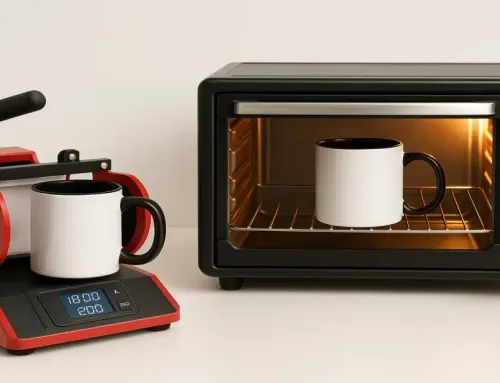sublimation for beginners: A complete 1 station perfect guide
Contents
- 1 sublimation for beginners: A complete 1 station perfect guide
- 2 Sublimation for Beginners
Sublimation for Beginners
The guide is sublimation for beginners.Sublimation printing is an innovative and popular technique that allows you to transfer designs onto various materials using heat and pressure. It’s especially favored for creating vibrant, durable prints on fabrics, mugs, phone cases, and more. This guide provides an introduction to sublimation, its process, required equipment, and tips for beginners to get started successfully.
1. What is Sublimation Printing?

Sublimation for beginners guide for you.Sublimation printing is a method of transferring images or designs onto specially coated surfaces. This is achieved through the process of sublimation, where a solid dye turns directly into gas when heated, bypassing the liquid stage. The gaseous dye bonds with the material’s surface, creating vivid and permanent prints.
Unlike other printing techniques like screen or vinyl printing, sublimation embeds the design into the material rather than layering it on top. This ensures that prints are long-lasting and resistant to peeling, fading, or cracking.
2. How Sublimation Works-sublimation for beginners
Sublimation relies on a unique chemical process:
- A design is printed using sublimation ink on special sublimation paper.
- The printed paper is placed onto the material to be customized.
- Heat and pressure are applied, causing the ink to turn into a gas.
- The gaseous ink bonds with the material’s surface, creating a vibrant and durable print.
The process only works effectively with polyester or polyester-coated materials. For fabrics, a high polyester content (at least 65%) is required to achieve vivid results.
3. Materials and Equipment Needed

To start sublimation printing, you’ll need the following:
- Sublimation Printer: A printer specifically designed for sublimation or converted from an inkjet model.
- Sublimation Ink: Special inks that turn into gas when heated.
- Sublimation Paper: Heat-resistant paper designed to hold sublimation ink and transfer it efficiently.
- Heat Press Machine: Used to apply heat and pressure during the transfer process.
- Blanks: Items to print on, such as polyester garments, ceramic mugs, phone cases, or keychains.
- Protective Equipment: Heat-resistant gloves and tape to handle hot materials and ensure proper alignment of the design.
Your Content Goes Here
4. Step-by-Step Sublimation Process
Follow these steps to create your first sublimation project:
- Design Creation: Create or select a design using graphic design software like Adobe Illustrator or Canva. Ensure the design matches the size of your blank.
- Print the Design: Load sublimation ink and paper into your printer and print your design. Remember to mirror the image before printing.
- Prepare the Blank: Clean the surface of the blank item to remove dust or dirt that may affect the transfer.
- Align the Design: Secure the sublimation paper onto the blank using heat-resistant tape to prevent movement during the transfer.
- Use the Heat Press: Set the heat press to the appropriate temperature and time (varies depending on the material). Place the item inside and press firmly.
- Remove and Inspect: Once done, carefully remove the paper and inspect your print.
5. Common Applications of Sublimation
Sublimation printing is versatile and used for a variety of products, such as:
- Apparel: T-shirts, hoodies, socks, and sportswear.
- Accessories: Tote bags, hats, and scarves.
- Home Décor: Pillows, coasters, and wall art.
- Custom Items: Mugs, phone cases, and mouse pads.
6. Tips for Beginners
- Start Simple: Begin with basic projects like T-shirts or mugs before moving on to complex designs.
- Test Settings: Experiment with heat press settings (temperature, time, and pressure) to find the optimal combination for each material.
- Maintain Your Equipment: Regularly clean your printer and heat press to prevent ink clogs and uneven transfers.
- Use High-Quality Supplies: Invest in reliable sublimation ink, paper, and blanks for the best results.
- Practice Alignment: Ensure your design is aligned correctly to avoid misprints.
7. Advantages and Limitations of Sublimation
Advantages:
- Durability: Prints are long-lasting and resist fading, cracking, or peeling.
- Vibrant Colors: The process produces high-quality, vivid images.
- Versatility: Sublimation works on a wide range of products, making it ideal for customization.
Limitations:
- Material Compatibility: Only works with polyester or polyester-coated items.
- Initial Investment: Requires specialized equipment, which can be expensive.
- Learning Curve: Beginners may need time to perfect their technique.
Conclusion
Sublimation printing is an excellent choice for anyone interested in creating personalized items or starting a custom printing business. By understanding the basics, investing in quality equipment, and practicing your skills, you can produce stunning, professional-quality designs. Whether for personal use or profit, sublimation offers endless creative possibilities!







